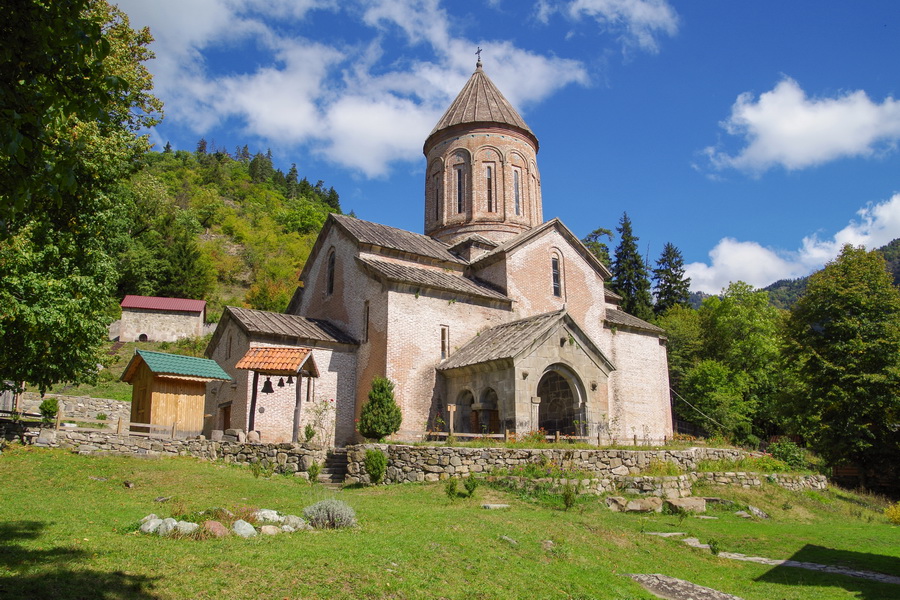
Timotesubani Monastery is a medieval complex in Georgia which is best known for its well-preserved frescoes. Located in Timotesubani (Kimotesubani) village in Borjomi Municipality of Samtskhe-Javakheti Region, the monastery’s close proximity to Borjomi and Tsagveri resorts makes it a convenient detour for travelers longing for serenity and pristine nature.
Monastery History
Timotesubani Monastery was built during the Georgian Golden Age, a period which lasted from the late 11th to early 13th centuries and ushered the Kingdom of Georgia into the pinnacle of its development. Shalva Akhaltsikheli, a Georgian military commander and courtier of the noble house of Toreli-Akhaltsikheli, initiated the building of the complex. After its completion, Shalva and his brother Ivane were known to always pray in the church before battles, and it is believed that Shalva Akhaltsikheli is also buried on the territory. Houses built on a nearby rocky ridge also belong to this same era. The Timotesubani Monastery complex continued to develop and flourish until the 18th century.
Architecture
The monastic complex was built with pinkish brick and includes several churches, houses for the monks and even a church shop. The main church is Timotesubani Holy Dormition Church, whose dimensions measure 28 x19x11 meters.
To the north of Timotesubani Holy Dormition Church are the remains of 10th-11th century monastic buildings and the vestiges of a hall church belonging to the 11th century. Monks’ houses can be seen in the monastery’s large, well-kept yard. On the upper northern terrace is a small, single-nave basilica built to commemorate Saint Barbara, the patron saint of armorers, artillerymen, military engineers, miners and others in need of protection.
Frescoes
Timotesubani Monastery is best known for the beautiful frescoes which lavishly adorn the walls of Holy Dormition Church. Although the murals date back to 1205-1215, many of them remain well preserved up to this day.
From 2000-2006, the International Center for the Arts carried out restoration work on the frescoes. When you enter the church, a painting of Jesus will be the first to capture your attention, while a unique composition of the Day of Judgment, covering an area of 20 square meters, will also unfold in front of you. Nearby, a fresco of the Virgin Mary which was painted on the arch of the altar watches over visitors. Within this fresco, the handwriting of various artists can be easily distinguished, for each signature contains unique characteristics which differ from the others stylistically. Another inscription found in the church commemorates the Georgian nobleman Shalva of Akhaltsikhe as a patron of the church.
Visitors who wish to learn more about the medieval murals of Timotesubani Monastery can purchase a small book on the subject which is sold in the church shop.
Visiting the Monastery
The route to Timotesubani Monastery begins along a road in a narrow gorge near Timotesubani village, at the end of which you will discover the complex surrounded by lush forest. Although you may visit the monastery year-round, it is especially beautiful during autumn when its colorful foliage is at its peak.

